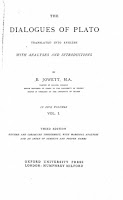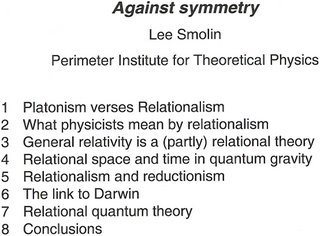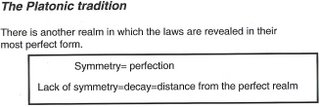But for the first time, quantum physicist Seth Lloyd of the Massachusetts Institute of Technology suggests that memories of entanglement can survive its destruction. He compares the effect to Emily Brontë’s novel Wuthering Heights: “the spectral Catherine communicates with her quantum Heathcliff as a flash of light from beyond the grave.”Where Susskind leaves off, Seth Lloyd begins
In Max' Tegmark's assessment of Quantum Immortality, "
Although quantum immortality is motivated by the quantum suicide thought experiment, Max Tegmark has stated that he does not believe that quantum immortality is a consequence of his work,"I thought to trace some perspective about what happened with the thought experiment of Susskind's versus the telling tale of what happens inside the blackhole based on the idea of something that is left outside the blackhole for consideration.
***
The consequence of sound in analogy serves to help us not only orientate causal action from direct contact, but the realization that such contact has consequences. It is befitting such thought experiments or analogies can help push the mind toward accepting the world in a different light so it understands that there is more to the world in which we see as observers, but also of what we meet through such contact as a manifestation through experiences.
Savas Dimopoulos
Here’s an analogy to understand this: imagine that our universe is a two-dimensional pool table, which you look down on from the third spatial dimension. When the billiard balls collide on the table, they scatter into new trajectories across the surface. But we also hear the click of sound as they impact: that’s collision energy being radiated into a third dimension above and beyond the surface. In this picture, the billiard balls are like protons and neutrons, and the sound wave behaves like the graviton.See Also: The Sound Of Billiard Balls
***
***
In
quantum mechanics,
quantum suicide is a
thought experiment. It was originally published independently by
Hans Moravec in 1987 and
Bruno Marchal in 1988 and was further developed by
Max Tegmark in 1998.
[1] It attempts to distinguish between the
Copenhagen interpretation of quantum mechanics and the
Everett many-worlds interpretation by means of a variation of the
Schrödinger's cat thought experiment. The experiment involves looking at the Schrödinger's cat experiment from the point of view of the cat.
Quantum immortality is a
metaphysical speculation derived from the quantum suicide thought experiment. It states that the many-worlds interpretation of quantum mechanics implies that
conscious beings are
immortal.
[2] Hugh Everett is reported to have believed in quantum immortality, although he never published on either quantum suicide or quantum immortality.
[3]
The quantum suicide thought experiment
Unlike
Schrödinger's cat-in-a-box thought experiment which used poison gas and a radioactive decay trigger, this human version involves some sort of lethal weapon and a machine which measures the
spin value of a photon. Every 10 seconds, the spin value of a randomly passing photon is measured. Depending on the orientation of the spin, either the weapon is deployed and the man is killed, or it is not and he lives.
With each run of the experiment there is a 50-50 chance that the weapon will be triggered and the experimenter will die. According to the
Copenhagen interpretation, the weapon will (in all likelihood) eventually be triggered and the experimenter will die. If the
many-worlds interpretation is correct then at each run of the experiment, the experimenter will be split into several worlds in which he dies and a few worlds in which he survives. In the worlds where the experimenter dies, he will cease to be a
conscious entity.
However, from the point of view of the non-dead copies of the experimenter, the experiment will continue running without his ceasing to exist, because at each branch, he will only be able to observe the result in the world in which he survives, and if many-worlds is correct, the surviving copies of the experimenter will notice that he never seems to die, therefore "proving" himself to be invulnerable to the killing mechanism in question, from his own point of view.
If the many-worlds interpretation is true, the measure (given in the many-worlds interpretation by the squared norm of the wavefunction) of the surviving copies of the experimenter will decrease by 50% with each run of the experiment, but will remain non-zero. So, if the surviving copies become experimenters, those copies will either die during their first attempt, or survive creating duplicates of themselves (copies of copies, that will survive finitely or die).
Quantum immortality
The idea behind quantum immortality is that, in running the quantum thought experiment, the experimenter may remain alive and, thus, be able to experience at least one of the universes in this set (even though these universes form a tiny subset of all possible universes). Over time, the experimenter would therefore never perceive his or her own death.
Surviving the quantum thought experiment
The small-probability remaining branches are in effect, though unlikely to be experienced by most of the copies of the experimenter that started out. Most of the observer-moments in the universe will not be in such low-measure situations because measure is proportional to the number of copies and therefore the number of that type of observer-moment.
However, the rareness of an observer moment has no relation to presence or absence of experience; if the many-worlds interpretation is true, all non-zero observer moments are experienced, even rare ones. Believers in quantum suicide think it gives a recipe for entering into rare observer moments. The experimenter indeed knows that this type of observer moment is rare, which is why it would be unlikely to occur in interpretations of quantum physics that don't have many worlds.
In the branching worlds, the observer has one of two possibilities, live or die. If he is alive, then presumably he does not recall the death. In the other reality, he is dead (and ceases to exist in
that reality). If the experiment is repeated over and over, there will always be a reality where the observer never dies. This reality will finally convince the observer that it is impossible to die.
Required assumptions
Proponents of the quantum immortality point out that, although it is highly speculative, the theory does not violate any known laws of
physics—but only if certain controversial assumptions are made:
- That the many-worlds interpretation is the correct interpretation of quantum mechanics, as opposed to the Copenhagen interpretation, the latter of which does not involve the existence of parallel universes. Note, though, that parallel universes may be possible through other mechanisms in the Copenhagen interpretation.
- Not dying some finite number of times (perhaps in parallel universes) constitutes immortality.
- Permanent cessation of the consciousness, along with the ability to observe, occurs at physical destruction (death).
Arguments against quantum immortality
David Papineau argues against the quantum suicide argument thus: "If one outcome is valuable because it contains my future experiences, surely an alternative outcome which lacks those experiences is of lesser value, simply by comparison with the first outcome. Since expected utility calculations hinge on relative utility values rather than absolute ones, I should be concerned about death as long as the outcome where I die is given less utility than the one where I survive, whatever the absolute value."
[4]
Jacques Mallah expands on this "utility" argument,
[5] suggesting that quantum suicide cannot give a recipe for "entering into" rare or "low measure" observer moments. This is because the amount of consciousness or "measure" of these rare observer moments is exactly as much as it would have been without the quantum suicide; in that case quantum suicide merely removes the other observer-moments. This is equivalent, in Mallah's view, to a single-world situation in which one starts off with many copies of the experimenter, and the number of surviving copies is decreased by 50% with each run. Therefore, according to this argument, the quantum nature of the experiment provides no benefit to the experimenter; in terms of his/her subjective life expectancy or rational decision making, or even in terms of his/her trying to decide whether the many-worlds interpretation is correct, the many-worlds interpretation gives results that are the same as that of a single-world interpretation.
[5]
Mallah also gives a "general argument against immortality" which argues that if people are immortal, then it is vanishingly unlikely to find oneself to be of a normal age rather than abnormally old.
It has been countered that in a many-worlds interpretation, the amplitude of being the living experimenter can be halved repeatedly without ever reaching zero. However, this point is not disputed by opponents of quantum suicide; rather, they claim that it is not the issue, while Mallah claims that the decrease in measure is the issue.
Max Tegmark's work
Using logic similar to that of
Greg Egan's
Dust Theory,
Max Tegmark argues that under any sort of normal conditions, before someone dies they undergo a period of diminishment of consciousness, a non-quantum decline (which can be anywhere from seconds to minutes to years), and hence there is no way of establishing a continuous existence in this world to an alternate one in which the person ceases to exist.
[6] Although quantum immortality is motivated by the quantum suicide thought experiment,
Max Tegmark has stated that he does not believe that quantum immortality is a consequence of his work
.
David Lewis's work
The
philosopher David Lewis, in "How Many Lives Has Schrödinger's Cat?", remarked that in the vast majority of the worlds in which an immortal observer might find himself (i.e. the subset of quantum-possible worlds in which the observer does not die), he will survive, but will be terribly maimed. This is because in each of the scenarios typically given in thought experiments (nuclear bombing,
Russian roulette, etc.), for every world in which the observer survives unscathed, there are likely to be far more worlds in which the observer survives terribly disfigured, badly disabled, and so on. It is for this reason, Lewis concludes, that we ought to hope that the many-worlds interpretation is false.
[7]
Derek Parfit's work
In
Reasons and Persons Derek Parfit used thought experiments ranging from teleportation to gradual changes to your psychology to argue that personal identity isn't a deep fact about the world. After quantum suicide there would be worlds with persons that shared your memories and there would be worlds without such persons. There is no Cartesian ego which does or doesn't survive.
Other criticism and controversy
Critics
[who?] contend quantum suicide fails as a thought experiment to achieve its intended purpose. Nonetheless, there are arguments
[specify] involving anthropic considerations among entire universes which do provide evidence
[specify] for the many-worlds interpretation.
[8]
Quantum suicide and quantum immortality remain controversial because a number of thinkers
[who?] disagree on its success or failure and, particularly, its relevance to life expectancy and decision making.
In fiction
Authors
[who?] of
science fiction have used themes involving both quantum suicide and quantum immortality. The idea that authors exploit is that a person who dies in one world may survive in another world or parallel universe.
Quantum suicide
Quantum suicide themes have been explored in the following works:
Quantum immortality
Quantum immortality themes have been explored in several works:
Books
See also
References
- ^ Tegmark, Max The Interpretation of Quantum Mechanics: Many Worlds or Many Words?, 1998
- ^ Goertzel, Ben; Bugaj, Stephan Vladimir (2006). The path to posthumanity: 21st century technology and its radical implications for mind, society and reality. Academica Press, LLC. p. 343.
- ^ See Keith Lynch's recollections in Eugene Shikhovtsev's Biography of Everett [1]
- ^ Papineau, David "Why you don’t want to get in the box with Schrödinger's cat" Analysis 63: 51–58. 2003
- ^ a b Mallah, Jacques Many-Worlds Interpretations Can Not Imply 'Quantum Immortality', 2009
- ^ Tegmark, Max Quantum immortality, November 1998
- ^ David Lewis. How Many Lives Has Schrödinger's Cat? The Jack Smart Lecture, Canberra, 27 June 2001. Australasian Journal of Philosophy. Vol. 82, No. 1, pp. 3–22; March 2004, pp. 21.
- ^ Observational Consequences of Many-Worlds Quantum Theory, 1999.
External links










